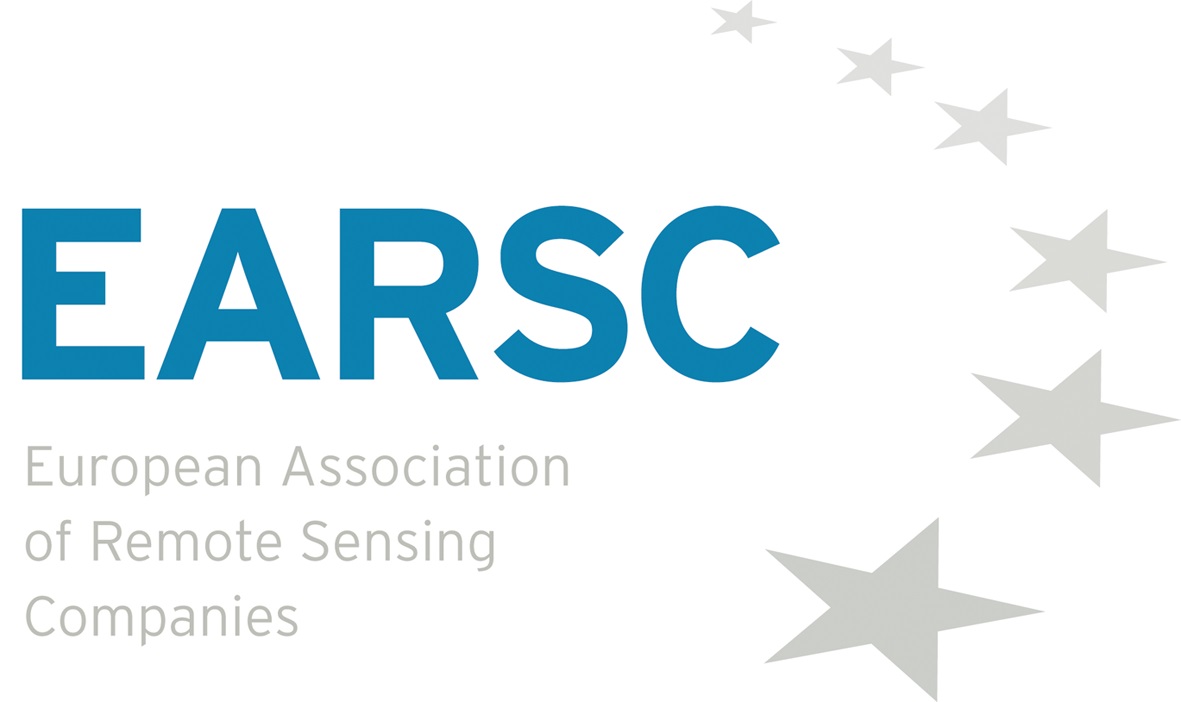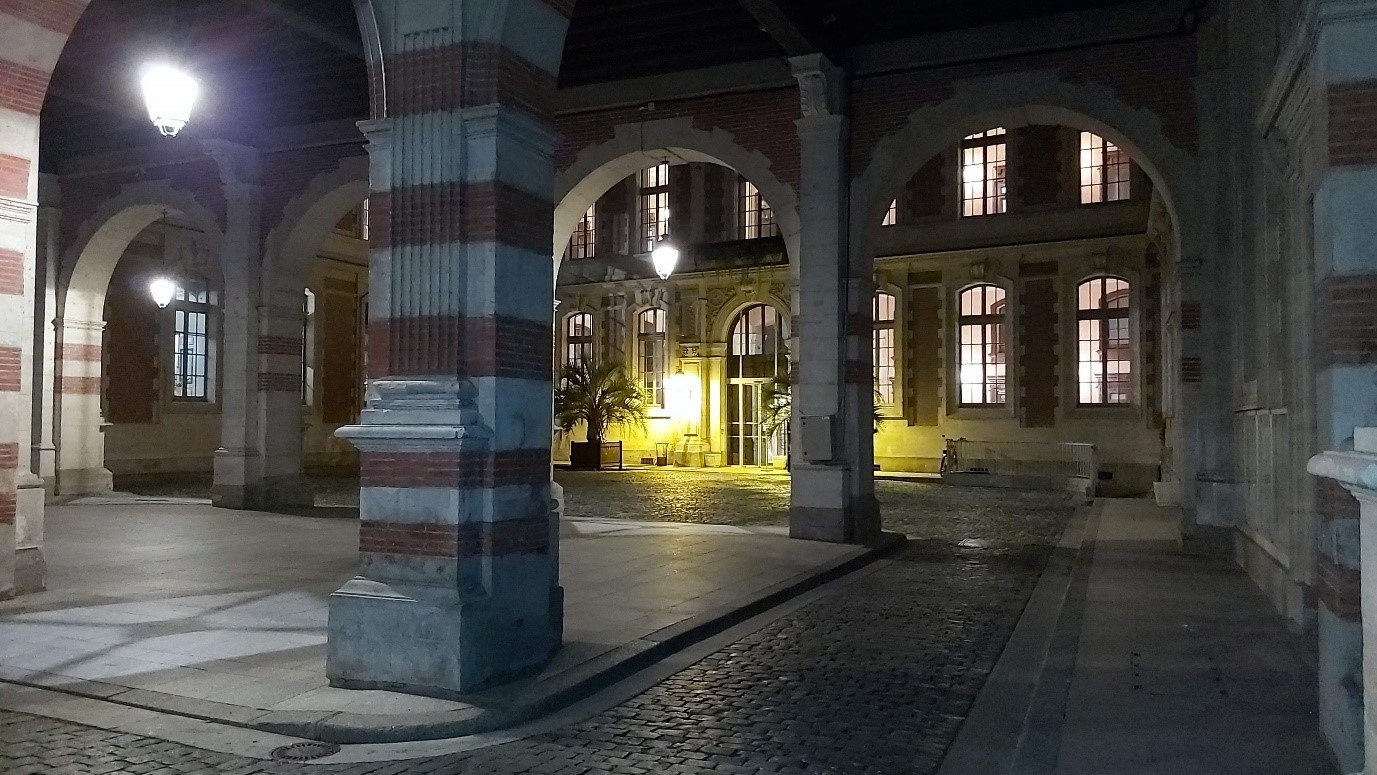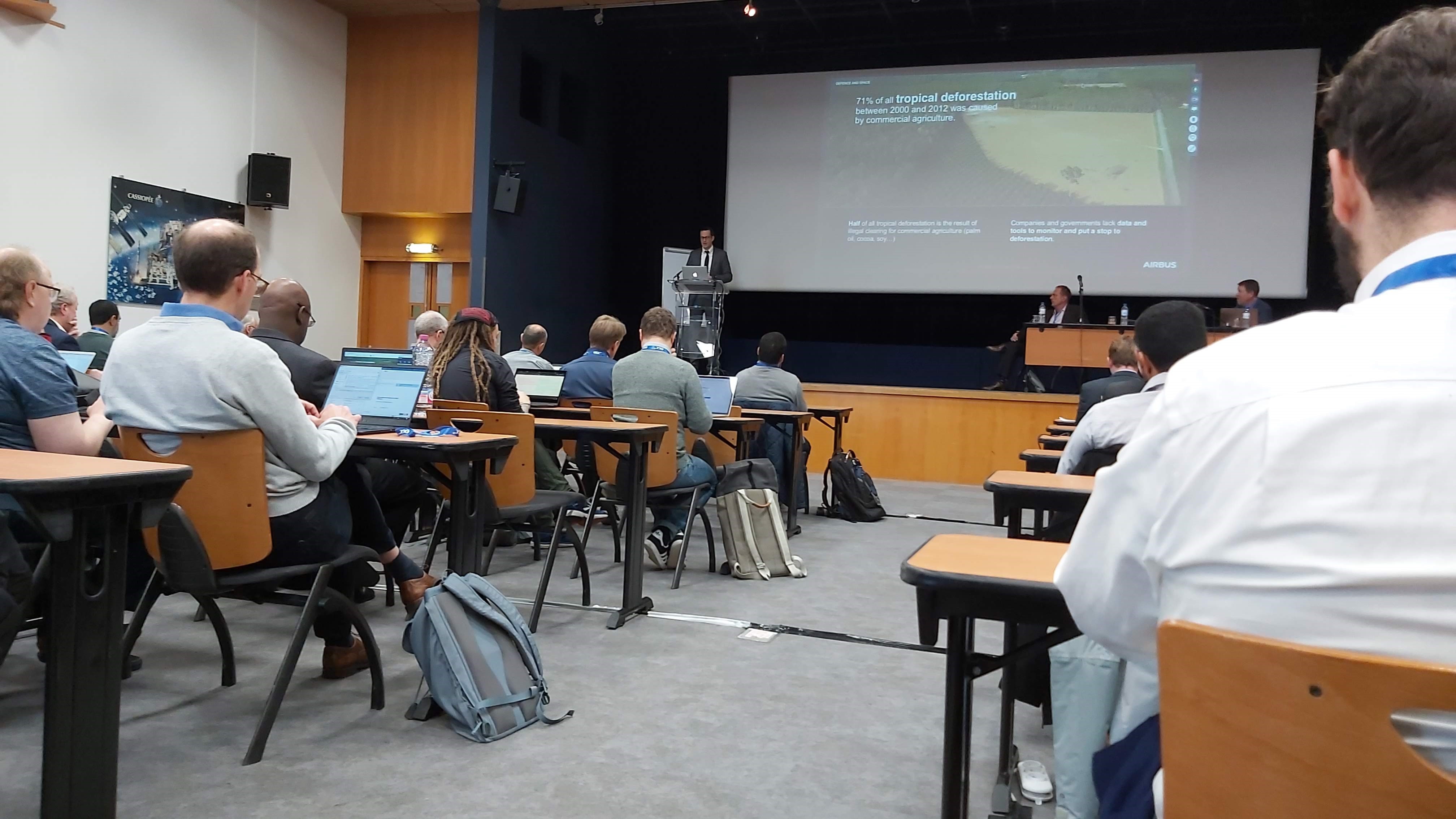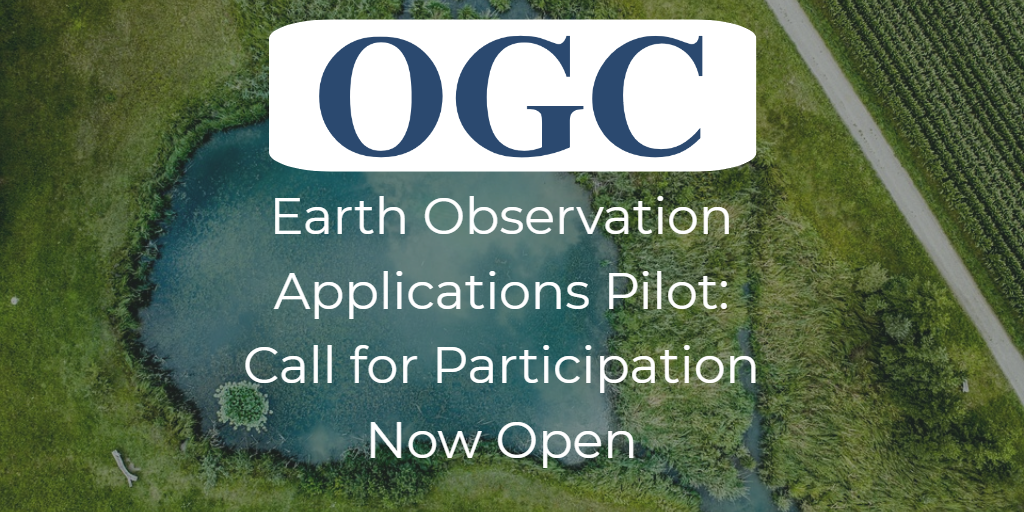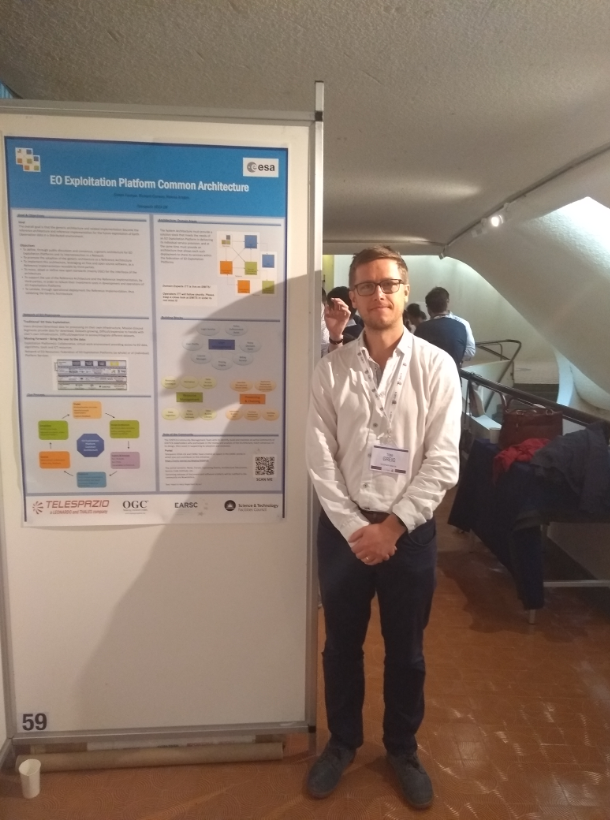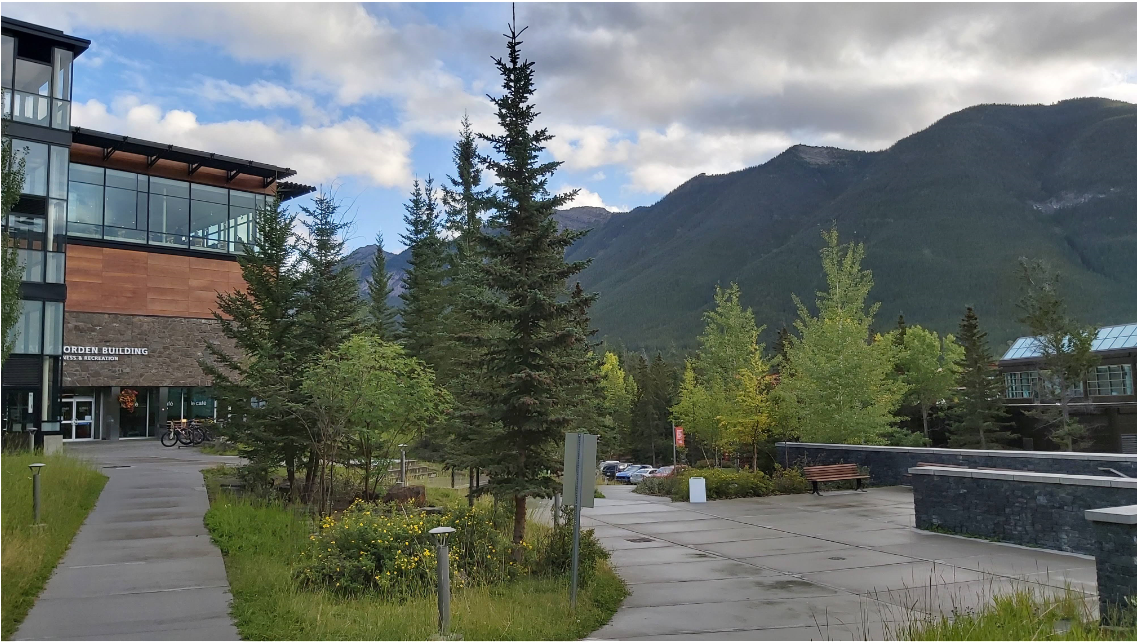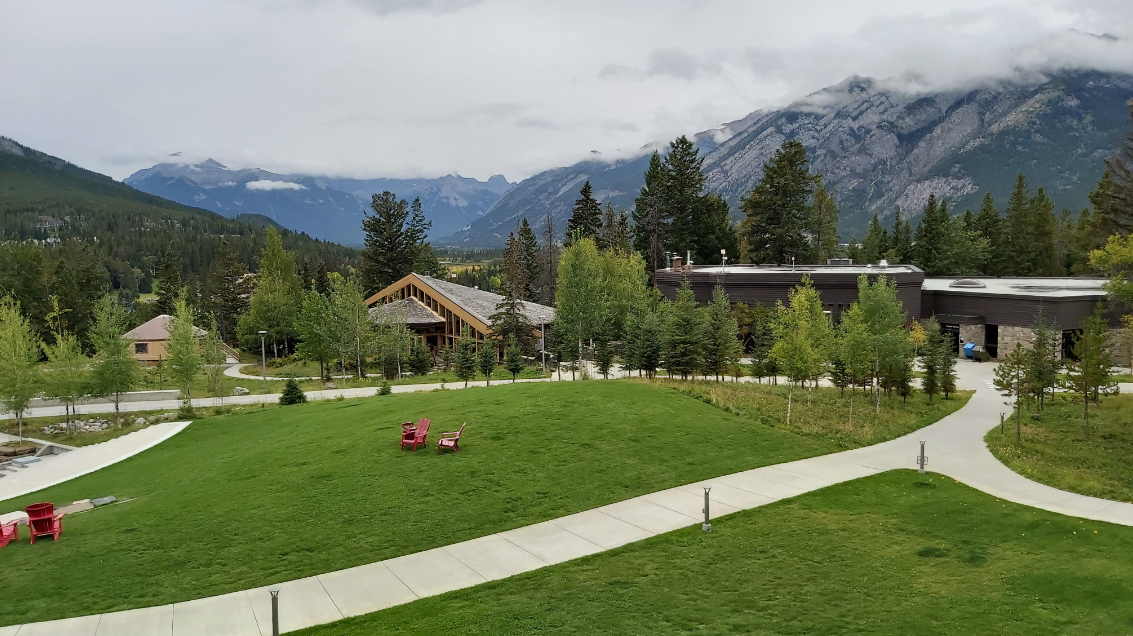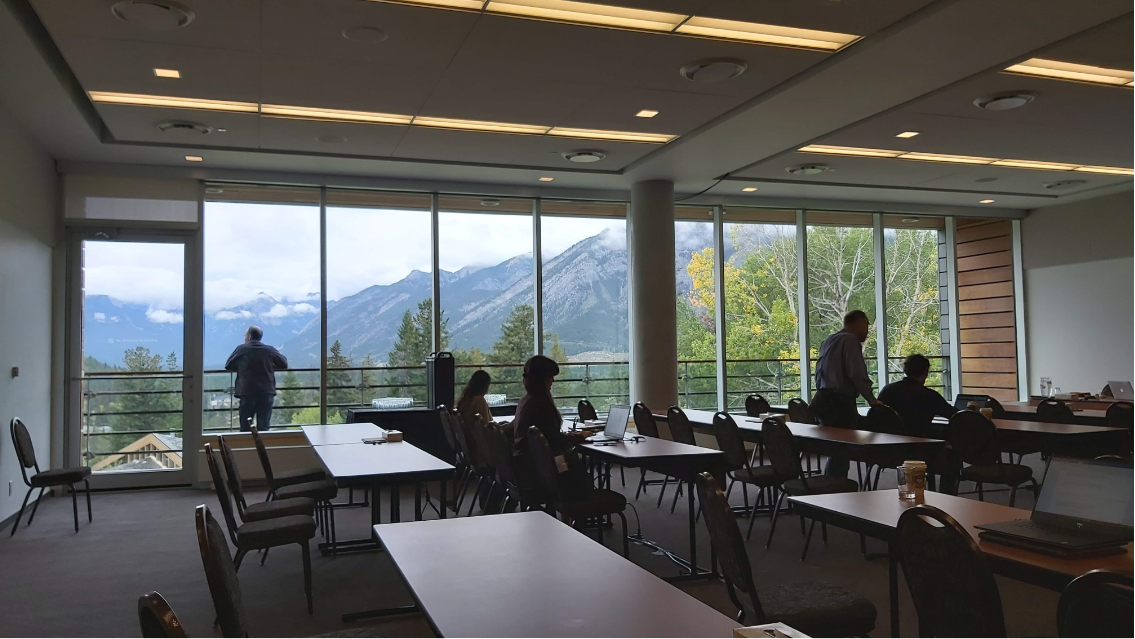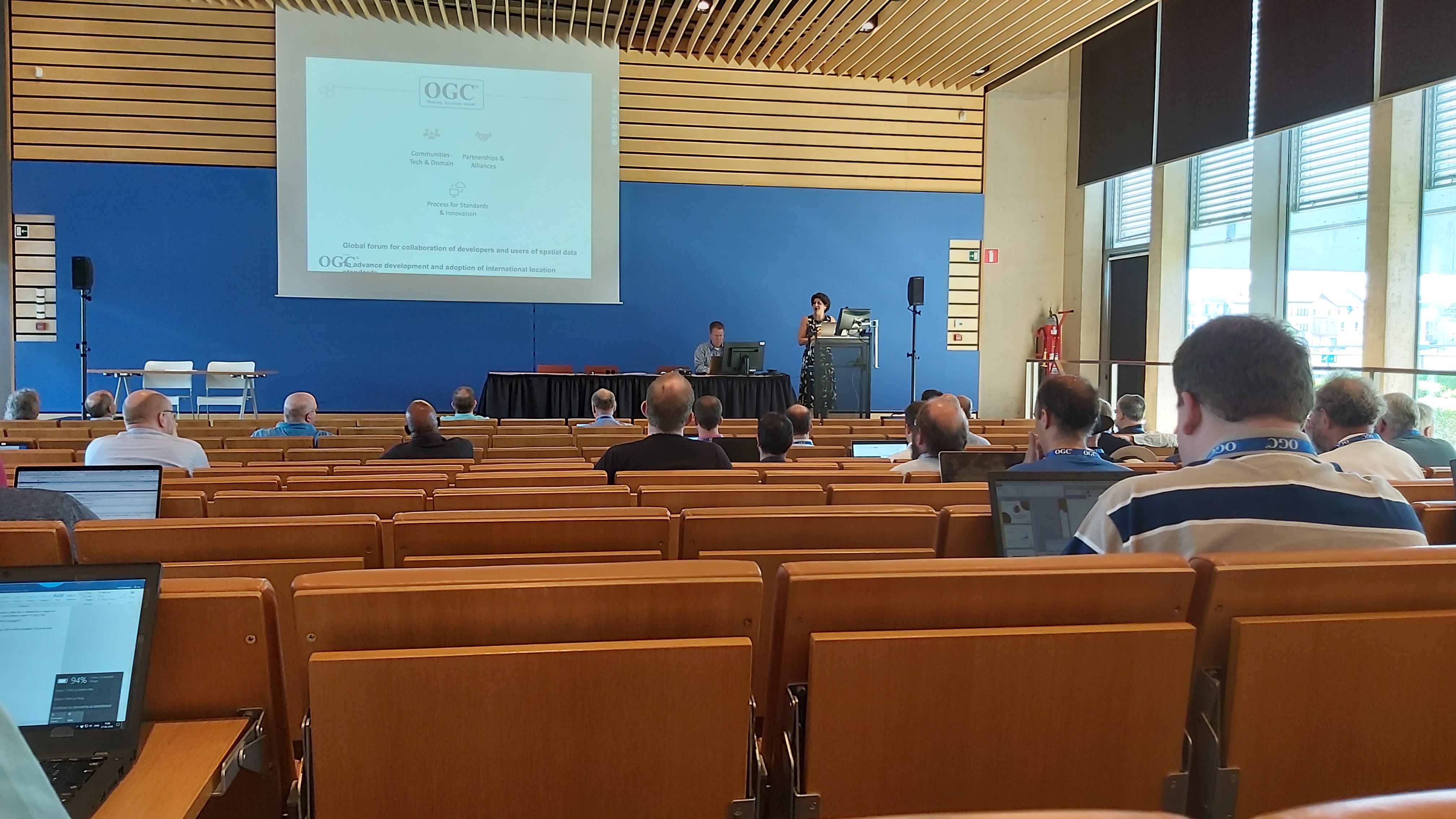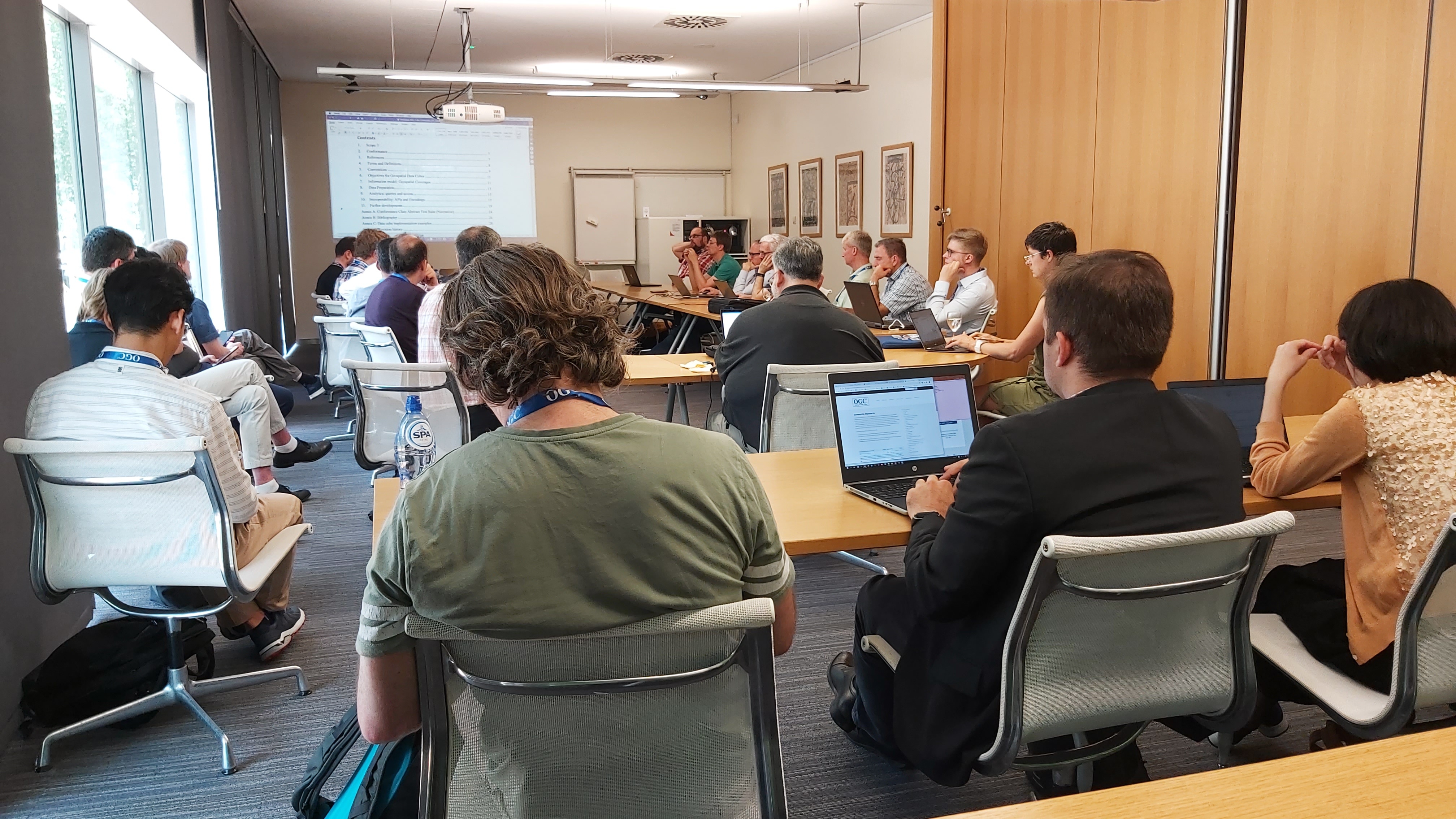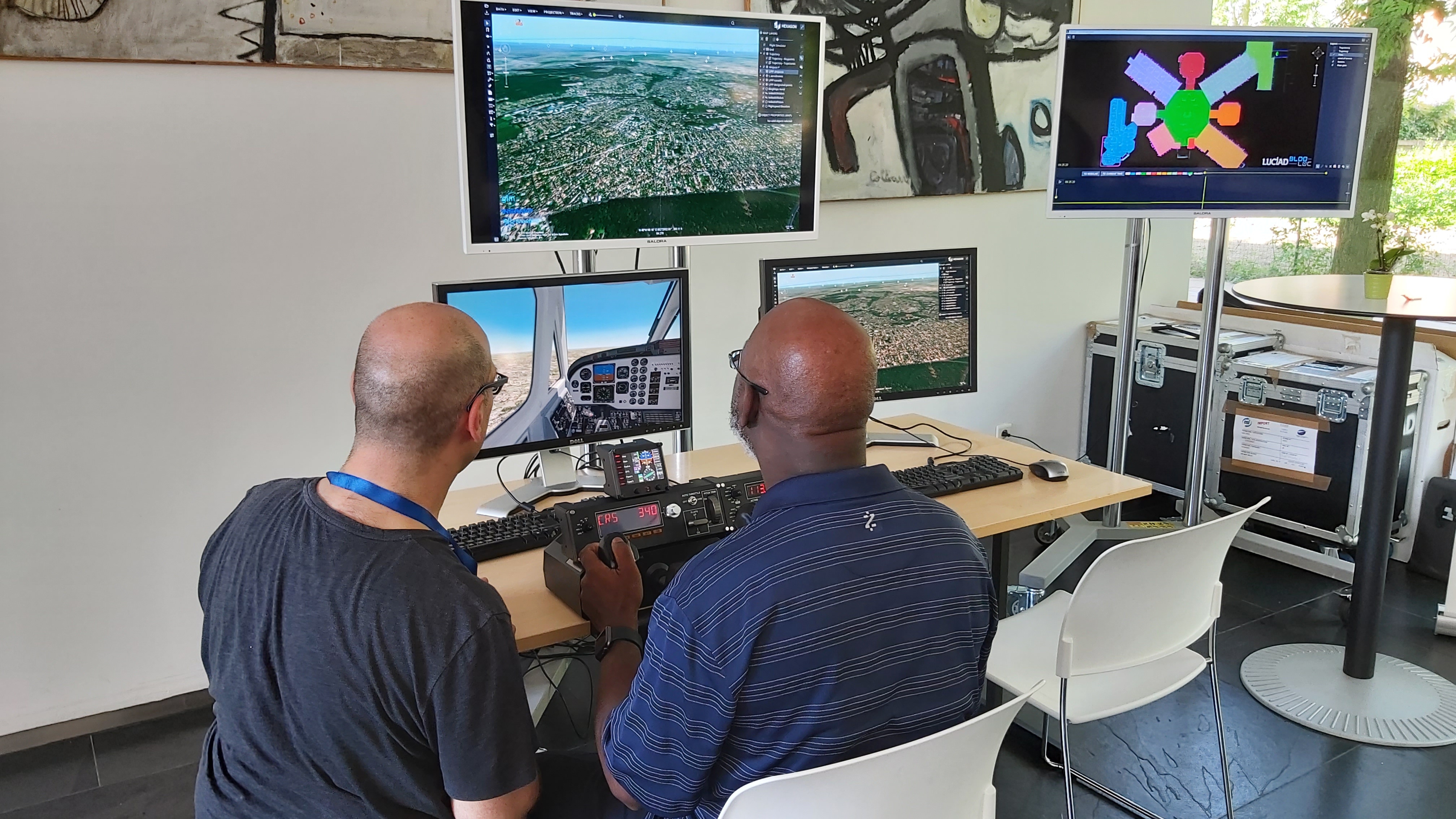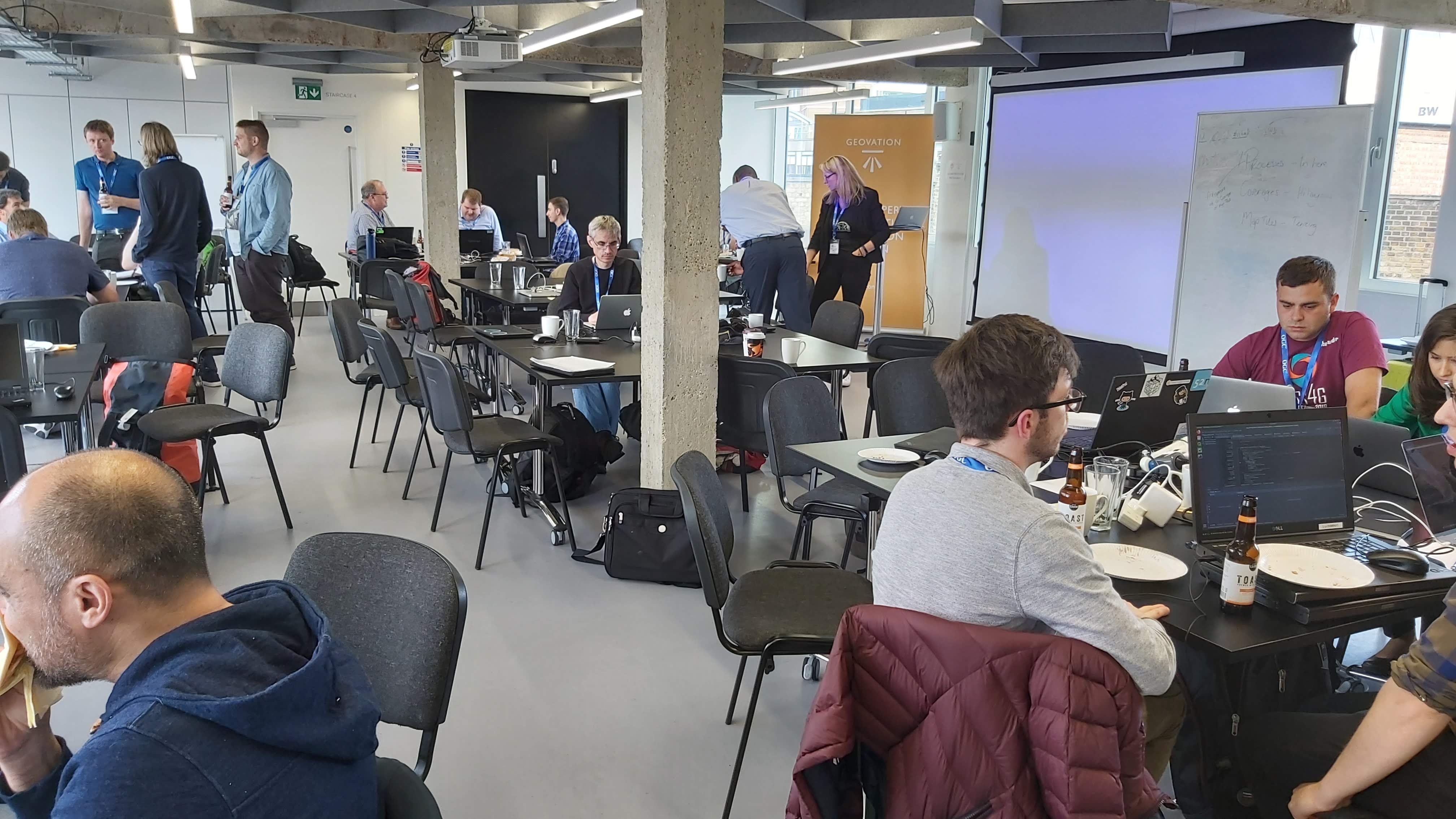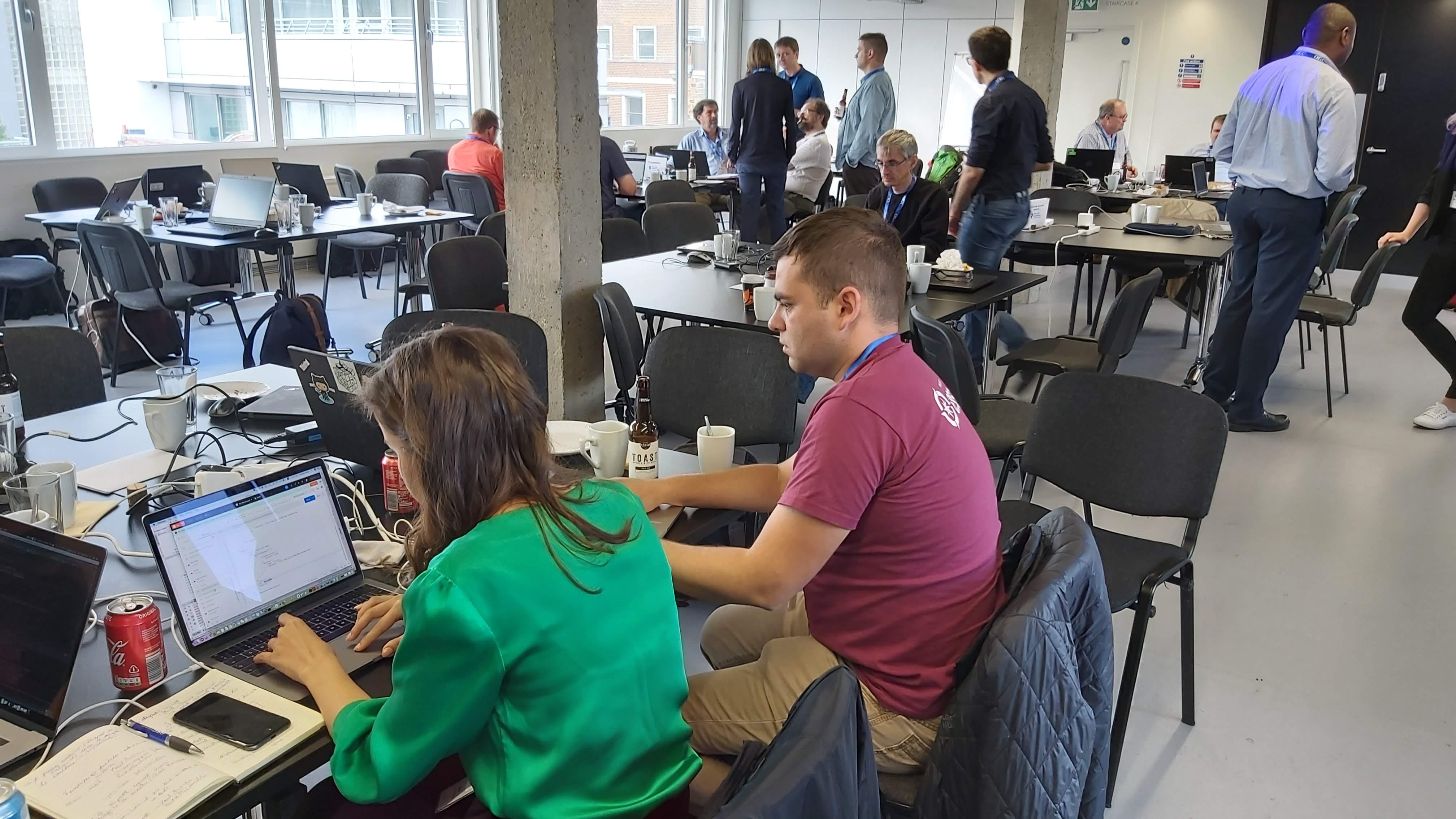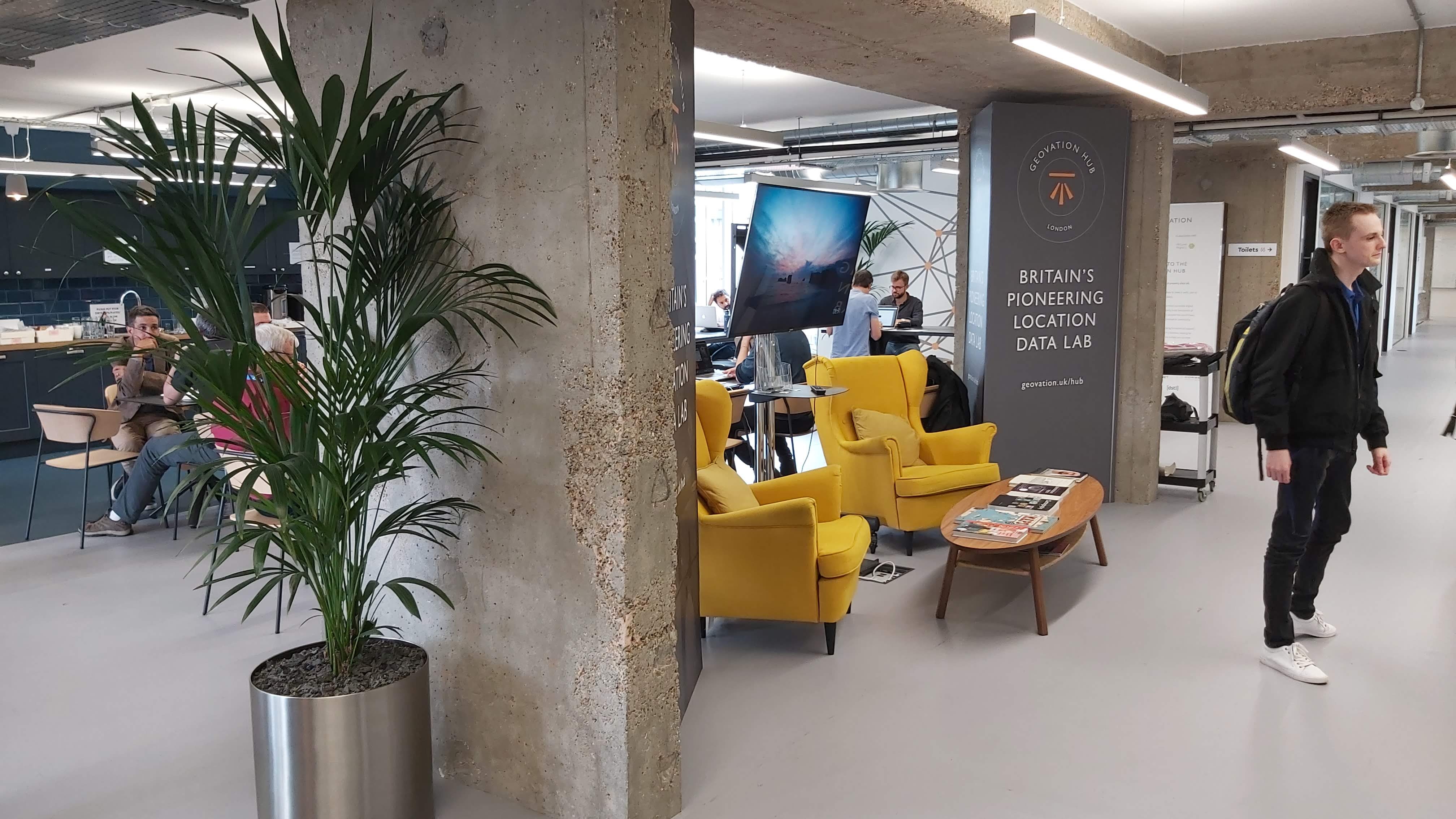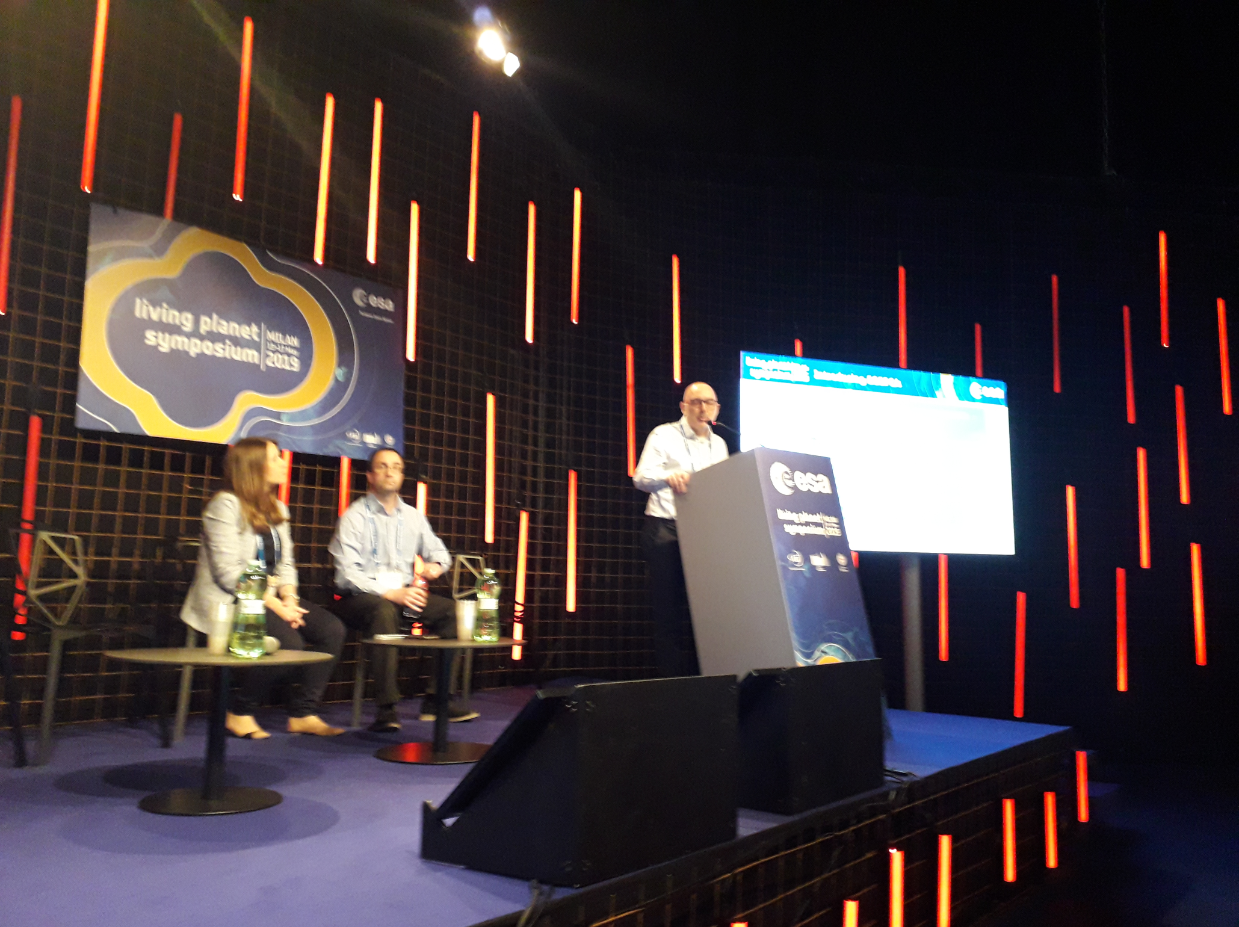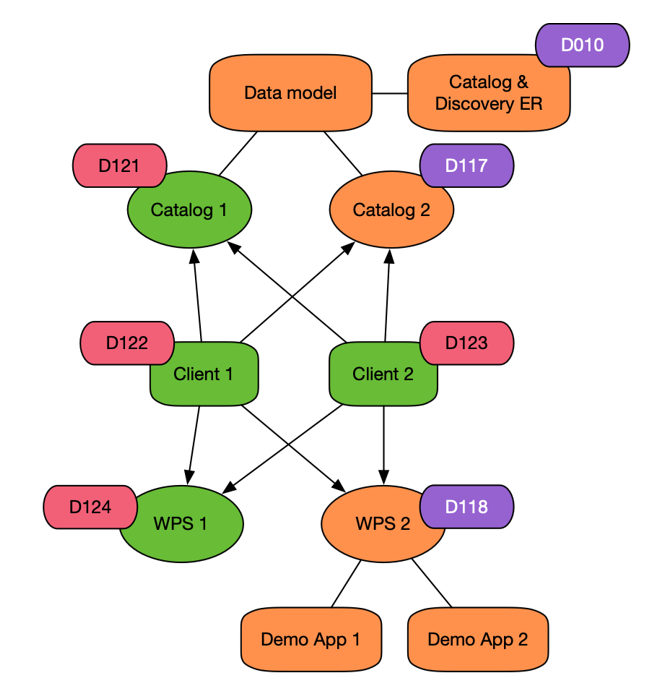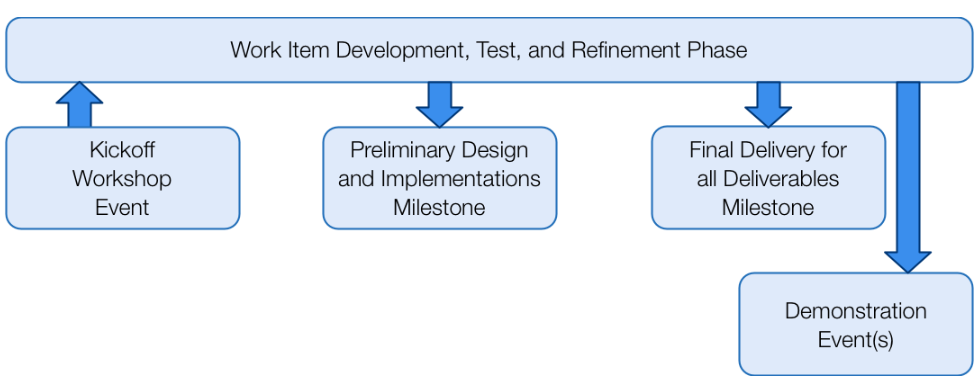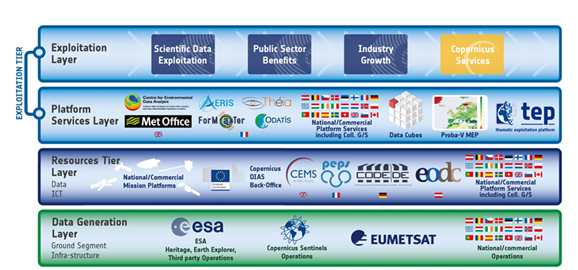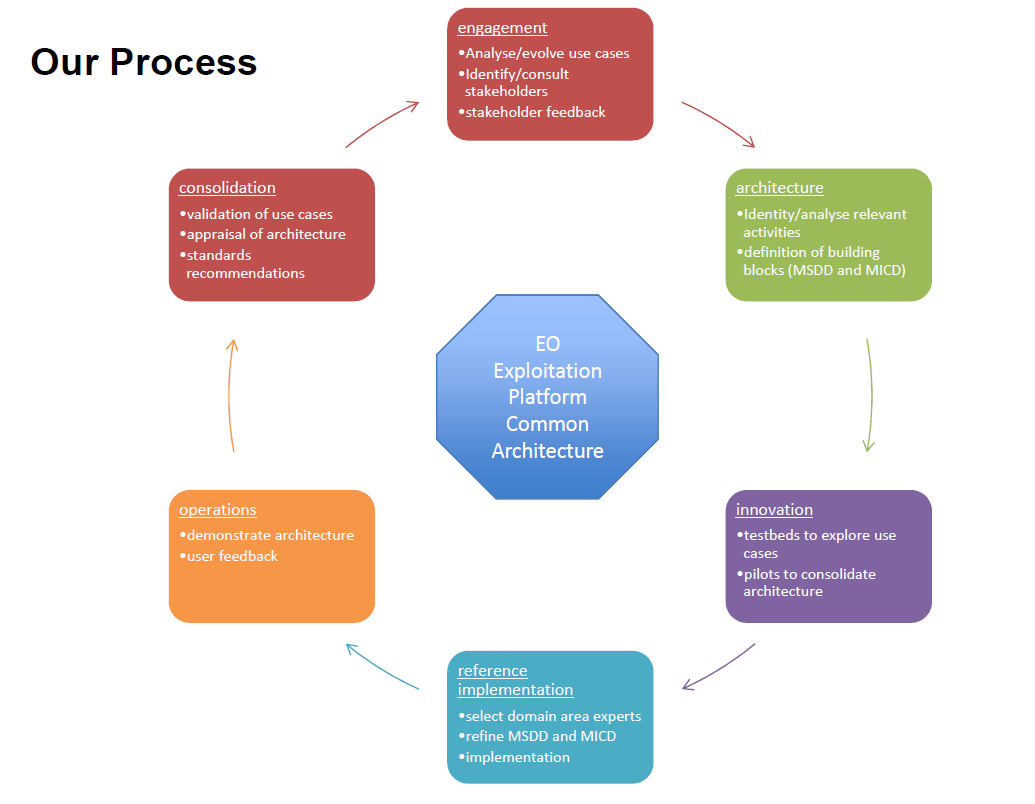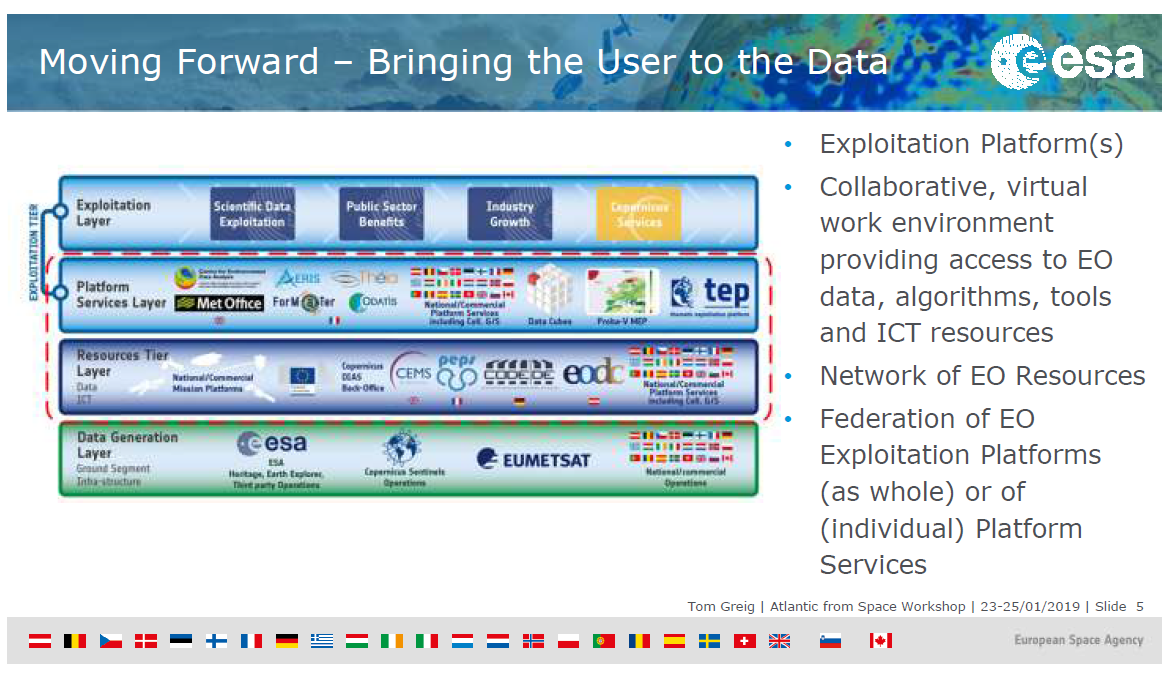The EOEPCA team attended the OGC’s 113th Technical Committee (TC) Meeting, which was held at the Toulouse Evénements Centre de Congrès Pierre Baudis in Toulouse, France from 18 – 21 November 2019 and was sponsored by Airbus.
More than 170 people attended the meeting, with key standards leaders and regional experts from industry, academia, and government.
The Future Directions session was of particular interest to the EOEPCA project. This session highlighted the work of the Innovation Programme and Testbed-15 and topics included:
- Earth Observation Applications Discovery
Focused on application registration and discovery for earth observation data exploitation.
- Federated Cloud Analytics
Assessing the role of a Federation Manager and the use of OGC WPS 2.0 in the context of performing analytics in an exploitation environment that spans multiple administrative domains.
- Data-Centric Security
Examining the use of encrypted containers and fine-grained data security controlled by location and time using NATO STANAGS (4778/4774) with the OGC API – Features.
- Machine Learning
Integration of various ML scenarios with OGC web services.
The EOEPCA team were represented in many Working Group sessions, including those for Architecture, Metadata & Catalog, EO for Agriculture, MetOcean, Coverages and Datacubes, WPS, Security, Big Data. A common topic for many Working Groups related to the current OGC initiative to establish REST API specifications (OGC API) to modernise a number of its existing standards.
During the Earth Observation Exploitation Platform (EOXP) Working Group, we had the opportunity to introduce the Earth Observation Applications Pilot (https://www.opengeospatial.org/projects/initiatives/eoa-pilot). The Call for Participation is currently open for the pilot and the deadline for proposals is December 11th 2019. The pilot aims to evaluate the maturity of the Testbed 13/14/15 EOC threads (EMS/ADES/Catalogue) and the concept of the pilot is to engage with EO analyst/application developers and EO platform operators to establish a real-world evaluation of the cloud architecture to ‘bring the user to the data’.
On the 4th November 2019, the Open Geospatial Consortium (OGC) called out for funded participation in its Earth Observation Pilot. Read on to see the complete press release...
OGC Pilot Initiative seeks to mature standards-based “Applications to the Data” architecture; funding available for participants
The Earth Observations Applications Pilot will evaluate the maturity of specifications developed to achieve a paradigm shift in Earth Observation - from “bringing the data to the user” to “bringing the user to the data”
Contact: techdesk@opengeospatial.org
4 November 2019: The Open Geospatial Consortium (OGC) has released the Call For Participation in its Earth Observation Applications Pilot and is offering funding for interested participants. Applications close December 11th, 2019.
The “EO Exploitation Platforms” initiative of the European Space Agency (ESA) aims to achieve a paradigm shift from “bring the data to the user” (i.e. users download data locally) to “bring the user to the data” (i.e. move user exploitation to hosted environments with co-located computing and storage).
The goal of the Earth Observation Applications Pilot is to evaluate the maturity of the Earth Observation Applications-to-the-Data specifications that have been developed over the last two years as part of various OGC Innovation Program (IP) initiatives taking place in ‘real world’ environments. ‘Real world’ includes integration of the architecture in an environment requiring authenticated user identity, access controls, and billing for resources consumed.
The pilot, sponsored by ESA, consists of two phases: Phase 1 invites application developers that work with Earth Observation (EO) satellite data to join a requirements definition workshop. The objective of this workshop is to understand the exact requirements of application developers in terms of data discovery, data loading, data processing, and result delivery. The results from this requirements gathering will define the implementation evaluation and performance criteria.
Phase 2 invites EO platform operators to implement the OGC Earth Observation Applications Pilot architecture as it has been defined in previous IP initiatives. The implementation shall take Phase 1 results into account. In essence, this requires implementing two Web API endpoints to allow the registration, deployment, and execution of new processes on the platform. Meanwhile, application developers implement their cases (defined in Phase 1) to provide test cases for the architecture.
The Earth Observation Applications Pilot is being conducted under OGC’s Innovation Program, the research and development (R&D) laboratory of OGC. Under OGC’s Innovation Program, sponsors and OGC members come together to address geospatial IT challenges in an agile and cooperative manner. Since 1999, more than 120 successful initiatives have taken place, from in-kind interoperability experiments run by working group members, to hackathons, pilots, and multi-million-dollar testbeds with hundreds of participants.
Cost-sharing funds are available from the Sponsor to partially offset the costs associated with development, engineering, and demonstration activities that are part of this pilot. The cost-sharing offers selected participants a unique opportunity to recoup a portion of their initiative expenses.
More information on the Pilot, including the official Call for Participation, is available on the Earth Observation Applications Pilot Webpage. Responses are due by December 11th, 2019, at 18:00 US Eastern.
Participation is open, globally, to OGC Members and non-members alike. However, cost-sharing funds can only be requested by entities from ESA member states, Canada, and Slovenia.
About OGC
The Open Geospatial Consortium (OGC) is an international consortium of more than 530 businesses, government agencies, research organizations, and universities driven to make geospatial (location) information and services FAIR - Findable, Accessible, Interoperable, and Reusable.
OGC’s member-driven consensus process creates royalty free, publicly available geospatial standards. Existing at the cutting edge, OGC actively analyzes and anticipates emerging tech trends, and runs an agile, collaborative Research and Development (R&D) lab that builds and tests innovative prototype solutions to members' use cases.
OGC members together form a global forum of experts and communities that use location to connect people with technology and improve decision-making at all levels. OGC is committed to creating a sustainable future for us, our children, and future generations.
Visit ogc.org for more info on our work.
This press release is also available online at: opengeospatial.org/pressroom/pressreleases/3101
Our colleague ,Tom Greig, attended the Digital Earth Symposium representing the EOEPCA project in the beautiful city of Florence.
See below our poster session where Tom presented our work.
EOEPCA Architect, Richard Conway, has been in Banff, Alberta, Canada for the September '19 OGC TC/PC Meetings from Monday, 9 September, 2019 to Friday, 13 September, 2019.
Attended the OGC Technical Committee meeting to participate in very interesting sessions relevant to the Common Architecture.
See below some pictures of the venue:
We would like to confirm that an ITT for the procurement of Domain Experts, reference A700001, has been published on EMITS.
Tender responses should arrive not later than Monday 14th October 2019 at 13:00 hours CET.
The Operators ITT will follow shortly. Please keep a close look at the EMITS portal in order to not miss it!
EOEPCA Architect, Richard Conway, is this week in Leuven, Belgium participating in the OGC's 111th Technical Committee meeting (24th - 28th June).
It has been a full week of parallel technical sessions, including Domain Working Group (DWG) sessions that Richard attended relating to Coverages, EO Exploitation Platform, Point Cloud, Architecture, QoS, GeoAI, Big Data, Met Ocean, WPS/Workflow, Security - plus a session summarising the activities of the OGC Innovation Program.
Some pictures below of the sessions:
EOEPCA team member and all participants were treated to an evening reception hosted by the City of Leuven with some local beers in the Gothic Town Hall.
The Open Geospatial Consortium (OGC) organised a Hackathon to develop OGC Application Programming Interface (API) specifications. The event took place in London on the 20th and 21st of June.
This hackathon tested the draft OpenAPI-based standards for coverages, map tiles, processes using a common template based on the OGC API for features.
EOEPCA Technical Architect, Richard Conway from Telespazio Vega UK, participated in the session on Thursday 20th of June.
The event was instrumental to the evolution of the OWS standards to a modern API based approach, setting the course for open geospatial standards for the next decade. The hackathon was organized around:
- Coverages
- Map Tiles
- Processing
The Agenda for the event can be found at https://portal.opengeospatial.org/files/?artifact_id=83865
The outputs of the hackathon inform the development of the OGC API - Common standard, the OGC API - Features standard, OGC API – Processes standard, the OGC API – Coverages standard and the OGC API – Map Tiles standard.
The Hackathon concluded with a session on Friday afternoon where the outcomes of the event were discussed.
On Thursday 16th of May at 12 o’clock the team presented the EOEPCA initiative in the Agora Metallica room.
Richard Conway, the EOEPCA Senior Software Architect, presented to the attendees the following points:
- EOEPCA context
- Process
- Use Cases
- System Architecture
- Processing and changing
- Resource Management
- User Management
- Conclusion
If you would like to see the full presentation, please click in the link below:
https://eoepca.github.io/resources/LPS19-EOEPCA-Workshop.pdf
The presentation went well and the number of attendees was over 30 people. Different companies participated in the event and in the QA session afterwards such as AirBus, Deimos, Solinex, Terradue, Atos, GMV, JNCC, Capgemini, Telespazio France, SISTEMA GmbH, T-Systems.
The presentation was followed by a QA session where the attendees had the opportunity to interact with the EOEPCA team and debate about the different aspects/challenges of the project. Please see below some of the very interesting questions asked:
Q1. Could the Common Architecture address other aspects of an exploitation platform such as high-performance computing?
A1. Ref. workshop slide 26 (Parallel Processing): The work of the OGC testbeds 13/14 only considers serial processing jobs running in a single Docker container. However, within the existing design there is a possible approach in which the Dockerized processor makes subordinate invocations to exploit some specific data processing compute cluster within the platform, e.g. processor is some python code that invokes a dask or SLURM cluster to perform its work. This would only work if the Platform to which the processor was deployed provided the expected compute service. Thus there would need to be a ‘contract’ through which the Platform declares the services it ‘Provides’, and the Processor declares the services it ‘Requires’. The orchestrator would rely on these declarations to ensure that processors are only deployed/executed on platforms that can support them.
Q2. It was stated that EO data must be FAIR (Findable, Accessible, Interoperable, Reproducible) and will not stay within the EO community
A2. The concept of ‘Reusable Research Objects’ is known to the EOEPCA team, and are seen as an approach in support of the FAIR principals. The Common Architecture will take the FAIR needs into account – see use case ‘Consumer performs Open Science’ (https://eoepca.github.io/use-case-analysis).
Q3. Confirm that UCs are open to community recommendations
A3. Yes. The Use Case document (draft) is published on GitHub (https://eoepca.github.io/use-case-analysis) and we encourage/welcome review and feedback – plus additional use cases that are not currently covered.
Q4. Note CEOS best practice, be wary of emerging standards that are not mature eg JSON LDs as deter take up
A4. The recommendation to follow the CEOS Best Practise is well noted. The JSON-LD approaches are being explored through current Testbed-15 – which we follow with interest. We are committed to follow a standards-based approach – including the evolution of standards where necessary. Our approach will be incremental to take account of such evolving standards.
Q5. Is the Common Architecture closed to companies that are not directly involved in its conception?
A5. No, quite the opposite. All technical documentation and implementation will be open source and available on GitHub. The Domain Experts will be ‘procured’ – specifically from companies across industry external to the system team. And we will continue to engage with the wider community to ensure a consensus-based approach is adopted.
Q6. Will data encryption to supported, particularly across platforms. Change of ownership of data?
A6. End-to-end data encryption has not previously been considered, but will be added as a use case for future consideration.
Q7. Are the OGC standards for interfaces at a level of maturity to be adopted?
A7. Standards will need to be evolved in partnership with OGC. WPS is a standard and trusted. WPS-T is not yet a standard – it is being explored through the OGC Innovation Programme and is the subject of an OGC Software Working Group. Where the functionality required of the Common Architecture is not yet met by a standard, then it is necessary to evolve the standards. This is the approach being taken by working closely with the OGC.
Q8. Request for terminology clarification between standards and proposed standards, as proposed standards are not standards.
A8. Any suggestions?
Q9. Who are the stakeholders of this project?
A9. ESA through its technical officer Cristiano Lopes in the sponsor. There are many stakeholders in that this is intended to be an open architecture freely available to the EO community. Thus, stakeholders include existing and future platform providers, as well as their end-users.
Q10. What does the Common Architecture mean for existing deployment, such as TEPs?
A10. EOEPCA is not intended to immediately replace current EPs, but could offer an attractive evolutionary path where value is seen to be had. The idea is to try to create a digital market for interoperability, and lower the barrier to users coming to the market to access EO data.
Q11. Could you say more about Billing and Accounting features
A11. Based upon the ‘Platform Architectures’ session (Weds morning) – it is clear from the questions/discussion that billing is an important topic – and also a complex one. The current Common Architecture design has not yet considered the area of Accounting & Billing – except to recognise that it is a crucial problem to solve in the architecture. This topic may be left to the Domain Experts to advance. Some work on this topic has been made in the OGC testbed – the engineering reports will provide a useful input to the EOEPCA design.
Q12. Are block chains under consideration?
A12. Not specifically – but no technology is yet ruled out. In particular, if they can offer an approach to distributed accounting/billing, then this would be of interest.
Q13. Where do DIAS fit in to accounting and billing?
A13. DIAS are platforms a lower layers of the reference model, they are free to adopt the standards and interfaces offered by EOEPCA for their own market places.
Q14. Timeline for ITT and architecture implementation
A14. Domain expects ITT expected June, architecture will begin by refining architecture for 2-3 months, then begin incremental implementation, whilst continually reviewing it evolution
Q15. Architecture useful as well as reusable reference implementation components?
A15. Yes. There is re-use at (at least) two levels:- the architecture can be re-used as building-blocks/interfaces against which 3rd-party implementations can be made; the reference implementation can be re-used as ready-made components to be adapted for platform deployments. All docs/software will be available on GitHub. In addition, we will provide support to developers in the re-use of these components.
Q16. How do you define success of this project?
A16. Success is related to achieving consensus and measured according to uptake by existing and future platforms.
Q17. When does funding project end?
A17. Funding for phase 1 ends Nov 2020. There is provision in the contract for a follow on phase (2).
The European Space Agency Living Planet Symposium is an event held every three years. This event focuses on how Earth Observation contributes to science and society, and how disruptive technologies and actors are changing the traditional Earth Observation landscape, which is also creating new opportunities for public and private sector interactions.
One of the themes of the Living Planet Symposium was the Space 4.0 and Earth Observation which aims to understand the technologies that impact on Earth Observation missions, data analysis and applications. Here is where EOEPCA comes to place as the initiative intends to become a widely adopted reference architecture and implementation for the future exploitation of distributed Earth Observation data and services.
The main objective of the EOEPCA team was to promote within the community and participants of the Symposium the Common Architecture benefits and how the process is intended to be run. The aim was to gather as much interest from the community (applications users, experts, platform providers, etc) as possible norder to collaborate together to build a consensus solution.
The feedback of the community into the process is key in order to build this Common Architecture and to make sure that will be used by current and future EO Exploitation Platforms. Currently we are aiming to consolidate the use cases analysis to cover all the different cases. Feedback is really important for us, please find in our GitHub repository the following documents that need to be reviewed.
- Use Case Analysis: https://eoepca.github.io/use-case-analysis/
- Master System Design: https://eoepca.github.io/master-system-design/
Collaborate with us in order to cover your use case!
Discovery is an art, at least if the desired object is more complex than a simple blog web-page such as this one. Here we are talking about discovery of Earth Observation (EO) products, services providing on-demand processing capabilities, and applications that are not deployed yet but waiting in an application store for their ad-hoc deployment and execution. The OGC Innovation Program has developed an architecture that allows the containerization of any type of application. These applications can be deployed on demand and executed in cloud environments close to the physical location of the data. Instead of processing ever-increasing amounts of data locally, the applications are transferred to where the data resides. But how to discover these applications? How to understand what data an application can be applied to? How to chain applications? How to combine applications with already deployed services that provide data and data processing capabilities? All these aspects are now in focus of OGC Testbed-15.
Discovery has been addressed in OGC for more than two decades. Several OGC and ISO specifications have been developed, such as ISO19115 Geographic Information: Metadata with its XML serializations and extensions defined in ISO19139 and ISO19139-2. Though proven to be powerful, recent developments prefer approaches that are based on OpenSearch formats and JSON encodings.
Let’s explore the current situation: we have a conceptual model for EO products and service discovery that is defined in OGC 11-035r1, the EO Product Collection, Service and Sensor Discovery using the CS-W ebRIM Catalogue. This specification is based on the previously mentioned ISO standards 19115 and 19139/-2, and serves as basis for modern metadata encodings defined in OGC 17-084, the GeoJSON(-LD) metadata encoding for EO collections. Figure 1 illustrates this composition of metadata models and encodings. OGC 17-084 re-uses GeoJSON and OWS Context properties but is designed towards ease of use. It minimizes redesign of properties by re-using properties from several existing namespaces, including Data Catalog Vocabulary (dcat), Friends of a Friend (foaf), Location Core Vocabulary (locn), PROV Data Model (prov), Resource Description Format (rdf), Simple Knowledge Organization System (skos), vCard Ontology (vcard), and several others.
Figure 1: Composition of modern metadata encodings (left) and OpenSearch response models (right)
The metadata side is complemented with OpenSearch response models as illustrated in figure 1. OGC 17-047, the OGC OpenSearch-EO GeoJSON(-LD) Response Encoding Standard, complements the OGC OpenSearch Extension for Earth Observation, OGC 13-026r8, which recommends the use of spatio-temporal filters defined in OGC 10-032r8, the OGC OpenSearch Geo and Time Extensions; and provides additional parameters to further constrain searches. The OGC OpenSearch Extension for Earth Observation uses the default response encoding Atom/XML. With GeoJSON and JSON-LD, OGC 17-047 provides alternative encodings. Using JSON-LD instead of GeoJSON allows to define each property explicitly as a URI, and thus increases the level of interoperability.
Testbed-15 will now explore first the capabilities of OGC 17-084 to express EO collection metadata, and OGC 17-047, to encode OpenSearch responses in GeoJSON(-LD). OpenSearch responses represent search results in containers with response entries as resources that may include hyperlinks. These allow further exploration of search result details by executing further searches, which allows multi-step discovery processes. In addition, Testbed-15 will experiment with faceted search as defined by OASIS. Applications will be handled as dcat:Data Services types. The challenge is to model the additional deployment information for each application. Other elements, such as access constraints and result access paths, are similar to already deployed applications that are made available in the form of Web services.
On the catalog side, substantial modifications to existing OGC Catalog Service - Web instances are foreseen. Any app-store depends on a (transactional) catalog that allows the registration of new apps, services, and deployment & execution environments. Testbed-15 will develop a Web-API based on the OpenAPI specification that gives both human users as well as machines full control over the registered items.
Further information on the current progress of Testbed-15 is available on the Testbed-15 webpage. While the deadline for responses to the Call for Participation (CFP) has passed, offers of in-kind contributions will still be considered. Anyone interested in shaping the direction of future OGC Initiatives, such as the upcoming Testbed-16, is urged to contact techdesk@opengeospatial.org or submit an idea to OGC’s Innovation Program Ideas GitHub Repository.
The Testbed-15 Kickoff Workshop is held 2-4 April at the US Geological Survey National Center in Reston, VA, USA.
The Kickoff Workshop is a face-to-face meeting where Participants, guided by thread architects, will refine the Testbed architecture (including generic interfaces and protocols to be used as a baseline for software components) and the demonstration concept.
Telespazio Vega UK has sent Simon Farman, EOEPCA Project Manager, as representative for the meetings.
The selected candidates for the following working packages are:
| Company selected | WP | Deliverable |
|---|---|---|
| SpaceBel SA | WP1 | D010 Catalogue & Discovery Engineering Report Development of the Data Model and Engineering Report covering all results of this task including the description of all implementations and the data model. |
| Deimos Engenharia S.A | WP2 | D117 Catalogue & Discovery Service SERVER (2 of 2) Implementation of Catalogue & Discovery Service SERVER in accordance with the Data Model (D010). Contributions to Engineering Report (D010). |
| 52.North GmbH | WP3 | D118 Web Processing Service (2 of 2) WPS instance and two demo applications that can be deployed dynamically and compliant with Application Package specification. Contributions to Engineering Report (D010). |
Figure 1 Overview of all work items and deliverables of this task. Green work items require a response to the OGC CFP, orange work items require a response to the ESA ITT. Arrows indicate interaction between client and service, direct lines indicate usage relationships. Not all connections are shown in the diagram. Both demo apps as well as WPS instances need to be registered at both catalogs.
One technical representative for each of the companies has been sent to the Kickoff Workshop.
The schedule is linked to the overall Testbed 15 programme managed by OGC.
The OGC Testbed 15 web page (including schedule), can be found here http://www.opengeospatial.org/projects/initiatives/testbed15.
Milestone | Event |
2-4 April 2019 | Kickoff Workshop Event |
31 May 2019 | Initial Engineering Reports (IERs) |
30 June 2019 | Component Implementation Designs |
June 2019 (TBC) | Interim face-to-face meeting Date and location to be confirmed at kick-off |
31 July 2019 | IER-to-DER status check; TIE Connectivity Test; Early Component Implementations (on which other components have a dependency) |
31 August 2019 | TIE Readiness Review |
30 September 2019 | TIE Tested Component Implementations completed; Preliminary DERs complete & clean, ready for testbed wide review |
31st October 2019 | Ad hoc TIE demonstrations (as requested during the month) & Demo Assets posted to Portal; Near Final DERs posted to Pending & WG review requested |
[Date TBD] November 2019 | Final DERs (incorporating WG feedback) posted to Pending to support WG & TC vote |
30th November 2019 | Final DERs (incorporating WG feedback) posted to Pending; Participant Final Summary Reports |
[Date TBD] December 2019 | Demonstration Event |
[Date TBD] January 2020 | ESA Presentation |
The following diagram provides a notional schedule of major Testbed events, phases and milestones and their approximate sequence of occurrence.
Where: Living Planet Symposium, Milan
When: 16th May at 12 pm in the Agora Metallica room
EO Exploitation Platforms Common Architecture” initiative aims at facilitating the user's life in the new EO ecosystem - full of different platforms, clouds, services - by ensuring that a common set of functions and interfaces exist across all providers that can be used without changes.
Join our session and participate in an open discussion to share your ideas on how to define and evolve the interfaces, technologies and solutions to achieve a simpler EO Value Chain.
For more information and register to the event, please contact: Eoepca.SystemTeam@telespazio.com
Telespazio Vega UK (TVUK) is the prime contractor on the ESA Earth Observation Exploitation Platform Common Architecture project. As part of this contract, ESA is intending to act as a sponsor to the Open Geospatial Consortium (OGC) Interoperability Testbed 15. The intended ITT applies only to the ESA sponsored Earth Observation Process and Application Discovery (EOPAD) Thread.
In line with the principles of OGC, TVUK on behalf of ESA will provide cost-sharing funds to partially offset expenses uniquely associated with the Exploitation Platform Thread.
The intended procurement runs in parallel with OGC Testbed 15 Call For Participation (CFP), which is planned to be published on 7th January 2019. The anticipated start date for the project is 2-4th April 2019 with a Kick-off Workshop Event.
Bidders wishing to participate in other Testbed 15 threads should submit a separate bid directly to OGC’s CFP published on 7th January 2019 at http://bit.ly/Testbed-15. ESA SPONSORED TESTBED 15 CONTEXT
Testbed-15 supports the development of ESA’s Exploitation Platform Common Architecture – building upon the outcomes of Testbed-13/14 in which applications are packaged as Docker containers and deployed/executed through a WPS interface. The focus of this Testbed-15 activity is to define the building blocks through which such applications/services can be exposed through a Catalogue to facilitate user discovery, parameterisation and invocation. The goal is to develop a Data Model and associated interoperable software for user search/discovery with management interfaces for providers to create/update/delete their applications. The outcome will provide recommendations for evolution of the existing standards baseline.
The ITT is published by TVUK Limited on EMITS.
http://emits.sso.esa.int/emits/owa/emits_external.showsum?typ1=8317&user=Anonymous&ctr=
EOEPCA team participated in this workshop by introducing the objectives and goal of the Common Architecture (EOEPCA).
The overall goal of EOEPCA is that the generic architecture and related implementation become the reference architecture and reference implementation for the future exploitation of Earth Observation data in a distributed environment.
Exploitation Platform
“Bringing the User to the Data” - A collaborative, virtual work environment providing access to EO data, algorithms, tools and ICT resources required for their use.
Objectives
- To define, through public discussion and consensus, a generic architecture for EO Exploitation Platforms and its interconnection in a Network
- To promote the adoption of the generic architecture as a Reference Architecture
To implement this architecture, leveraging on free and open source software, as a Reference Implementation reusable by third-parties
To reuse, adapt or define new open standards (mainly OGC) for the interfaces of the architecture
To support the use of the Reference Architecture and the Reference Implementation, by thirdparties, in order to reduce their investment costs in development and operations of EO Exploitations Platforms
To validate, through operational deployment the Reference Implementation, thus validating the Generic Architecture
You can download the presentation here.
EOEPCA team participated in this workshop that assessed the opportunities for Atlantic region focused on EO research and development, downstream activities and ICT evolution.
https://eo4society.esa.int/event/atlantic-from-space/
[EO] Earth Observation, [EP] Exploitation Platforms, [CA] Common Architecture
What is it?
- Open, consensus based architecture for Exploitation Platform within Network of EO Resources
- Interoperability facilitated by use of Open Standards for interfaces/data
- Aims at becoming a Reference Architecture with reusable Reference Implementation
Goal
The overall goal is that the generic architecture and related implementation become the reference architecture and reference implementation for the future exploitation of EO data in a distributed environment.
What are the benefits?
- End-users benefit from a consistent experience
- Experts benefit with ‘portable’ services across platforms
- Ability to access datasets from other domains
- Possibility to build workflows that bring in processing at other facilities
- Platform providers can more easily integrate with other similar platforms
- Re-use of Reference Implementation as building blocks
EOEPCA team provided a presentation that can be found here.
